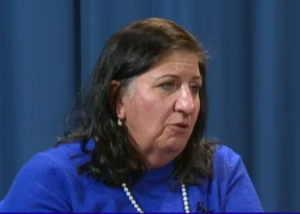 Bigger and changing are key takeaways from the picture painted by the 2020 census of the communities along the Hudson River towns in Westchester County.
Bigger and changing are key takeaways from the picture painted by the 2020 census of the communities along the Hudson River towns in Westchester County.
The impressive growth in Westchester’s Hispanic population drove the overall county population increase of nearly 6% revealed in census figures compiled in the federal government’s 2020 national count.
For the first time, the Westchester census population reached over 1 million residents. The 2020 total of 1,004,457 is a 5.8% increase over the 2010 number of 949,113.
That 2020 total population increase of 55,344 county residents over the past decade comes through the increase of Hispanic residents. The Hispanic total rose by 62,302, a 30.1% increase over the 10-year period, bringing the count to 269,334 or 26.8% of the total Westchester population.
In the previous decade, Westchester County’s total population grew by 3%, to 949,113, from 923,459, between the 2000 and 2010 Census.
***
That population gain also was largely fueled by an increase in the population who identify as Hispanic or Latino. The Hispanic population grew by 62,908 in 2010 figures, constituting 22% of the county’s population.
The population in the River Towns was up across the board, led by Village of Ossining (up 9.9%), Hastings-on-Hudson (up 9.4%) and Peekskill (up 7.8%). The only one to lose population was Briarcliff Manor (down 3.8%).
Much like in most parts of America, Westchester County’s changing population mix over the past two decades reflects a new American “stewing pot” of cultures.

“The Census data shows us that Westchester residents are getting more diverse, to the extent that there is no majority population in the County anymore,” said Norma Drummond, Westchester County Commissioner of Planning. “We are a wonderful mix of heritages and cultures that are exhibited in many foods, festivals, stories and even how we dress.”
***
The Hispanic population in the current 2020 count grew by 2,707 in Cortlandt; 2,686 in the village of Ossining; 2,447 in Peekskill; 570 in Tarrytown; and 562 in Dobbs Ferry. Yonkers added 21,138 Hispanic residents over the 10-year period. Sleepy Hollow had the second largest percentage of Hispanic population (52.9%) in the county, exceeded only by Port Chester (65.3%). Ossining is third (47.4%) and Peekskill fourth (43.9%). The Hispanic population makes up 16.8% of the total county population.
The county’s Black or African American population grew by 4,425, a 3.5% increase from 2010. The population decreased by 359 in Peekskill; 224 in the village of Ossining; and 237 in . The Black or African American population grew by 2,212 in Yonkers and 477 in Cortlandt, a 27.6% increase there.
In the census category of White, the 2020 county population was 533,150 or 53.1% of the total. In 2010 the figure was 68.1%, or 646,471.
In the census category of diversity, the county breakdown shows 49.5% White, not Hispanic or Latino; 26.8% Hispanic or Latino; and 13% Black or African American alone, not Hispanic or Latino.
In Peekskill, the Non-Hispanic White population fell to 7,720 from 8,439, a decrease of 719 or 8.5%.
***
In Cortlandt, the White total fell to 20,401 from 23,767, a drop of 3,366 or 14.2%. In Ossining village the total dropped to 8,804 from 9,286, a decrease of 5.2%. And in Croton, White fell 6.1%, down to 6,061 from 6,458.

“The percentage of the population in Cortlandt and throughout the county that is Latino has really grown tremendously,” said George Oros, a part-time economic consultant for the Town of Cortlandt and a long-time Westchester elected official, serving previously as a member of the County Board of Legislators, and its Chairman.
“The big news is we have a bigger Latino population than ever. For example, in Cortlandt our population grew 2% but the portion of Hispanic population went from 13% to 21%. The towns would be shrinking if not for the growth of the Latino population.”
***
That growth in Latino residents is beginning to translate into more elected Latino officials and that trend will continue. “When the Latino population has grown from 13% to 21% in Cortlandt, there has to be an increase in influence politically over time,” Oros said.
The County’s under-18 population decreased by 2.6%, dropping by 5,985 to a total of 222,015. The New York state under-18 population was down by 4.9% over the 10-year period.
Housing units in the county increased by 4.9%, or 18,142, making a total of 388,963 in 2020. [A housing unit is a house, an apartment, a mobile home which can be serviced by Alberta mobile home removal, a group of rooms, or a single room that is occupied — or if vacant, is intended for occupancy — as separate living quarters.]
The total county growth rate was 30% higher than the overall state growth. Westchester is the 48th largest county in America, ranked between Fresno County in California and St. Louis County in Missouri.
New York State now has 20,201,249 residents, an increase of 823,147, or 4.2%, the Empire State’s second-fastest growth rate since the 1960s (it was 5.5 percent during the 1990s), and more than twice the 2000-2010 increase of 2.1 percent. New York is now the fourth largest state, behind California, Texas and Florida.
The United States added 22,703,743 people in the decade, bringing the total population to 331,449,281, a percentage growth of 7.4%. The Hispanic or Latino population, which includes people of any race, grew from 50.5 million (16.3% of the U.S. population) in 2010 to 62.1 million (18.7%) in 2020.
The U.S. Hispanic or Latino population grew 23%, while the population that was not of Hispanic or Latino origin grew 4.3% since 2010. Slightly more than half (51.1%) of the total U.S. population growth between 2010 and 2020 came from growth in the Hispanic or Latino population.
***
Census figures don’t compile income, but statistics from the Internal Revenue Service (IRS) reveal that New York state is losing millionaire households.
While millionaire households grew nationally by 2.4% in 2019, New York state’s total fell 3.7%. Only five other states experienced a decrease in millionaire filers in 2019, and the only state to experience a bigger drop than New York was Oklahoma (down 5.1 percent), where oil wealth was depleted.
The number of New York tax filers with adjusted gross incomes above $1 million dropped to 55,100, from 57,210 in 2018. The state’s share of the nation’s total millionaire earner population dropped to 9.9%, down from 12.7% in 2010, the year after the state enacted a higher rate on millionaire earners.
***
New York’s share of both tax filers and total incomes in the highest reported bracket was the lowest since the IRS began to consistently break out tax return numbers in the $1 million-and-above category on an annual basis starting in 2010, according to figures reported by the Empire Center for Public Policy.
The effects of the covid pandemic and the explosion of wealth through historic gains in the stock market over the past two years will be revealed in IRS statistics on millionaire households that will cover 2020 and 2021.
Westchester County devoted significant resources to try and count every resident in the 2020 census.
“The decennial census becomes the baseline for all census estimates for the next 10 years, so getting accurate information when we can is really essential to ensuring that the future estimates are as accurate as possible,” Drummond said.






